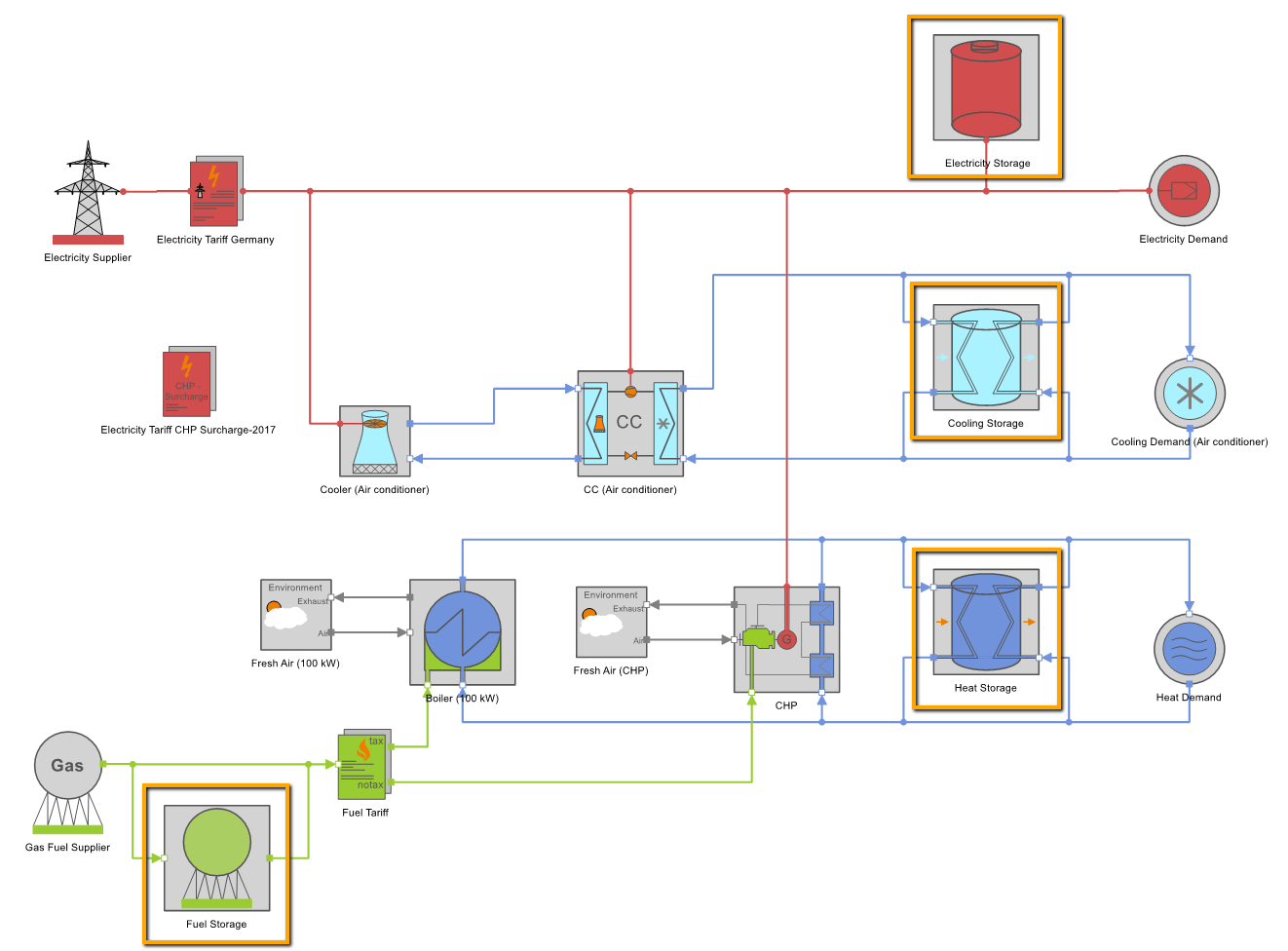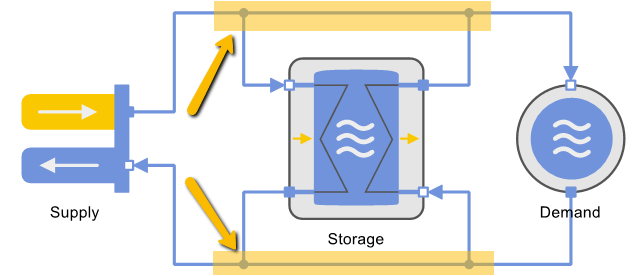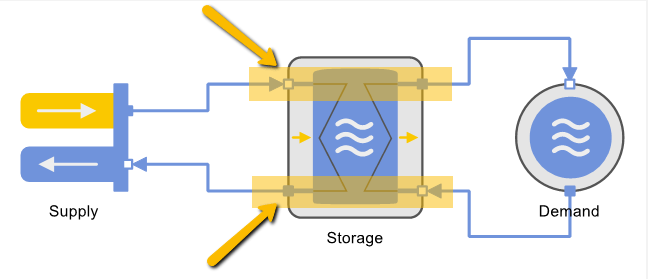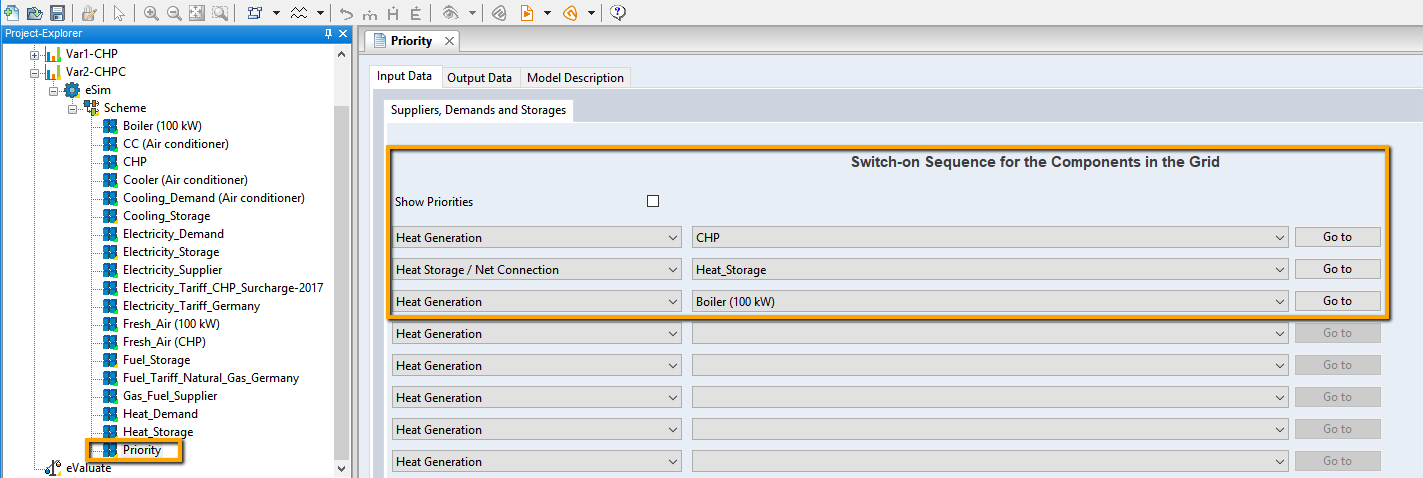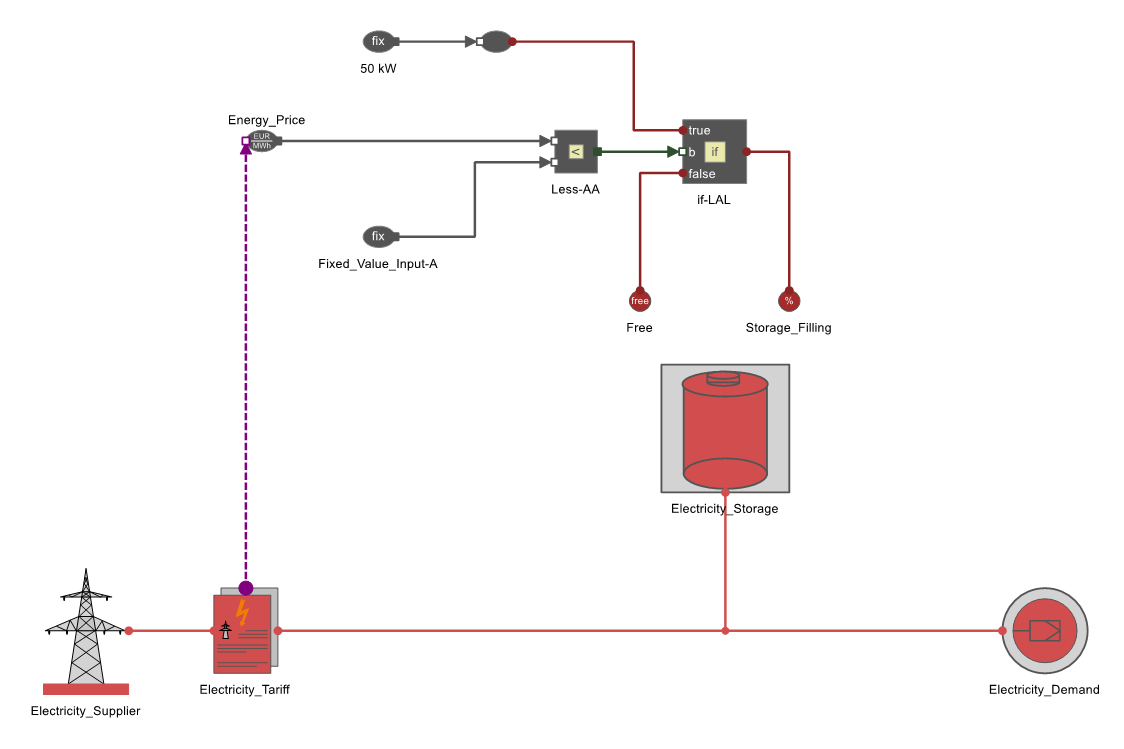Integrating Storages
Integrating Thermal Storages
There are two Operating modes with which thermal storage tanks (Cooling Storage, Heat Storage, Stratified Heat Storage) can be integrated into a scheme.
The Storage with bypass option allows a bypass of the storage tank. Only either loading or unloading is possible within one time step. The circuitry is shown on the top right-hand side.
The Hydraulic compensator option causes the loading and unloading side of the storage tank to be decoupled. Loading and unloading are possible within one time step. In this case, all thermal energy is passed through the storage tank. You can see this circuitry on the bottom right. In terms of energy, the selection has no effect. Only the temperatures can vary.
Storage Loading Strategy
If you integrate a storage into the energy system without a special controller, the optimization always tends to discharge the storage in each individual time step. Energy from storage is usually cheaper than energy that needs to be converted from primary energy.
Storages for Buffering Non-Controllable Installations
Non-controllable energy producers such as Solar Thermal System or Photovoltaics are an exception. With these technologies, a surplus of thermal or electrical energy can be buffered in the storage if there is no demand. Make sure that the storage is large enough to absorb this excess energy.
Determining the Storage Capacity with TOP-Energy
If you do not know the minimum required storage capacity, you can determine it with TOP-Energy. Simply create a much too large storage tank, run the simulation once and determine the required storage capacity from the maximum Filling Level: Output Data → Technical Output Data → Energy Content in Storage → Filling Level.
Three Methods for Implementing the Storage Loading Strategy
There are several ways to avoid immediate discharging of the storage tank. Three possibilities with their advantages and disadvantages are presented below: priority (the switch-on sequence), optimization with look-ahead and the programmable control.
Priority (switch-on sequence)
In most cases, a storage loading strategy can be implemented using a switch-on sequence for the components in the grid. The loading and unloading Priority can be selected here. For example, the setting shown below in a case with CHP, boiler and storage tank leads to the generation of thermal energy with the highest priority in the CHP. Once the nominal thermal capacity of the CHP has been reached, the storage tank is discharged. Energy is only generated in the boiler when the storage tank no longer provides sufficient energy. Conversely, the storage tank is loaded by the CHP, i.e., the CHP runs at maximum capacity to load the storage tank.
In the case of several storages or additional network components with feed-in (e.g., power supply) it may be necessary to determine the loading and unloading priority individually. This is shown in the picture below. It should be noted that the Net Connection (network supply) must also be entered in the priority list as charging.
Feed-in by priority < 2 means that components with a priority of less than two are ramped up to achieve feeding into components with this loading priority.
The two settings described here use the storage tank as a buffer for the CHP.
Optimizing by Look-Ahead (time frame)
If a switch-on sequence is not desired you can optimize the operation of the storage by Look-ahead optimization.
The storage tank is loaded when the actual heat production costs are lower than at a later point in time. At a later point in time, the energy is withdrawn from the storage tank again.
For a daily storage, you should not select a look-ahead under 36 hours.
The larger the storage or the period of time that is to be buffered with the storage, the larger the Time Frame for Calculation must be selected.
Programmable Control
The third option to realize storage loading strategies is the use of programmable controls. With the help of the programmable controls, the storage tank loading or a desired storage tank filling level can be set depending on external parameters (such as the electricity price, time of day or solar radiation). A simple example is shown below.
In the example shown, the electricity price is compared with a fixed number from the fixed input at any given time. If the electricity price is lower than this fixed number, the storage tank will be charged with 50 kW.

